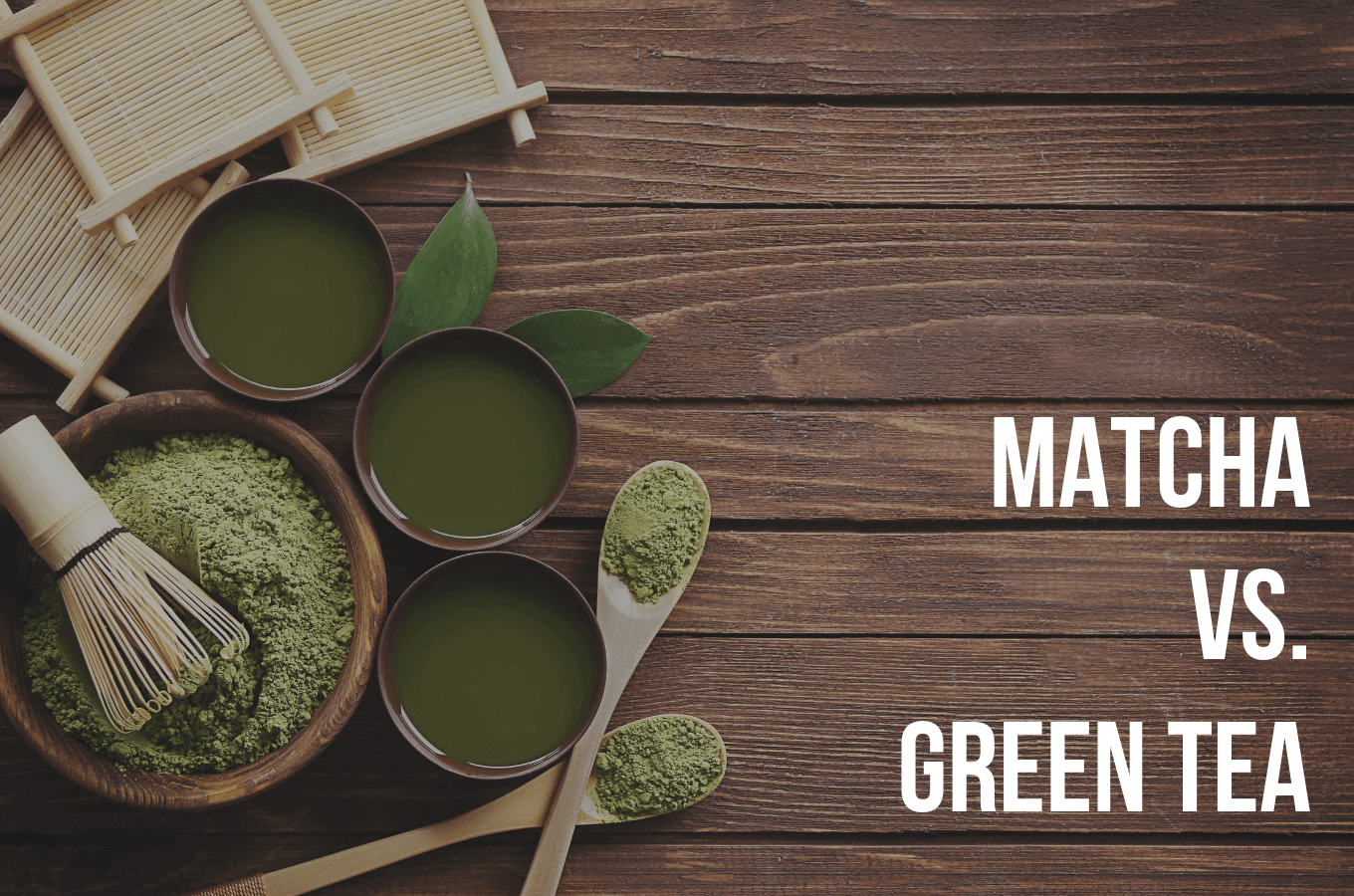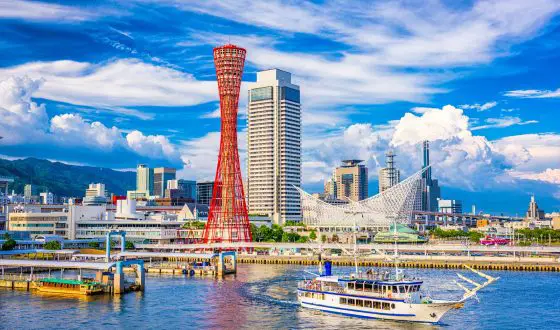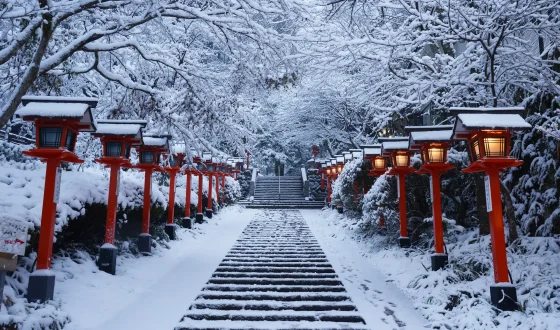Matcha vs Green Tea – The Most Detailed Comparison
Green tea may be familiar to many of you as it has been a popular beverage all around the world for ages. However, matcha, known as the superior form of green tea, has only gained popularity recently. If you are a fan of green tea, you may also like matcha. These two kinds of drinks are similar to some extent, but they also have noticeable differences. In order to get the most detailed comparison of matcha vs green tea, you cannot miss reading this blog. Now, let’s check it out!
Matcha vs Green tea: Similarities & Differences
Basically, green tea is a kind of tea made from the leaves and buds of the Camellia sinensis plant. Matcha is finely ground powder of specially grown and processed green tea leaves. In other words, both of the drinks come from the same plant. The difference lies in how they are sold. While green tea leaves are steamed and dried before being sold as a loose leaf tea or in tea bags, matcha is sold in powder form.
Besides the mentioned similarity and differences of matcha and green tea, they also have other similar and different features in terms of history, cultivation, preparation, flavor and health benefits.
History
The origin of green tea and matcha can be traced back to about 5000 years ago when Emperor Shen Nung in ancient China discovered the Camellia sinensis plant.
Green tea then became a precious medicine only for the most elite groups in Chinese society for hundreds of years. Around 800 A.D, during the Tang Dynasty, a book titled The Classis of Tea was published by a Chinese man named Yu Yu. That was the first publication documenting the art and culture of green tea in China.
During the Song Dynasty, Buddist monks started grinding green tea leaves into a rough powder and mixing it with hot water in a bowl. After the Zen monk Eisai brought this practice to Japan, it became Samurai warriors’ pre-battle tradition, which eventually evolved into what is now known as the traditional Japanese tea ceremony.
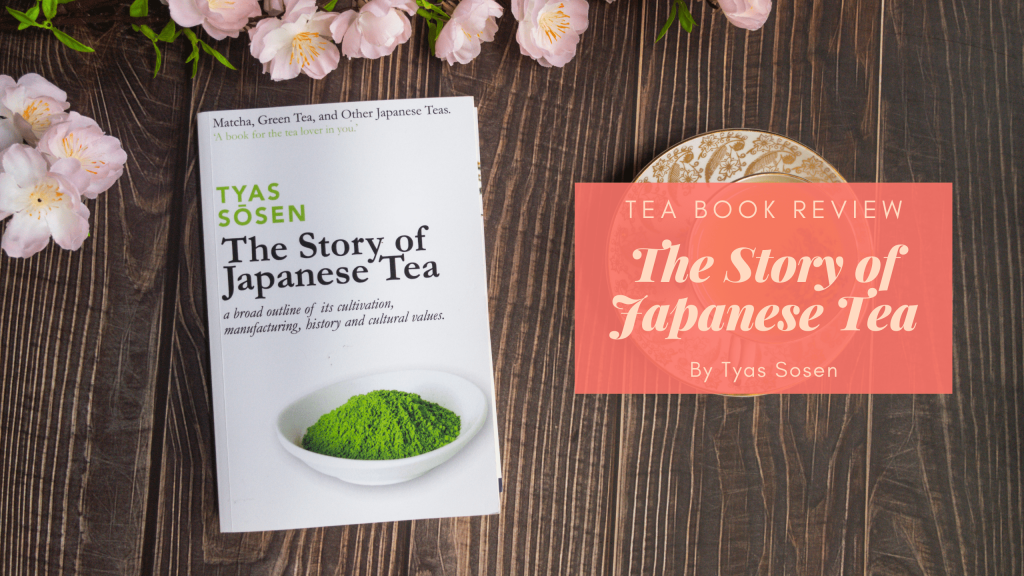
Tea tradition first originated in China and then developed into tea ceremony in Japan
Cultivation
Matcha and green tea come from the same plant, but their cultivating and processing methods are not similar. You know, China is the main provider of green tea in the world while Japan cultivates the most matcha.
Green tea is grown in the sun, whereas matcha is shade-grown during the last three weeks of harvest to increase their levels of chlorophyll and L-theanine that help to boost matcha’s flavor and health benefits.
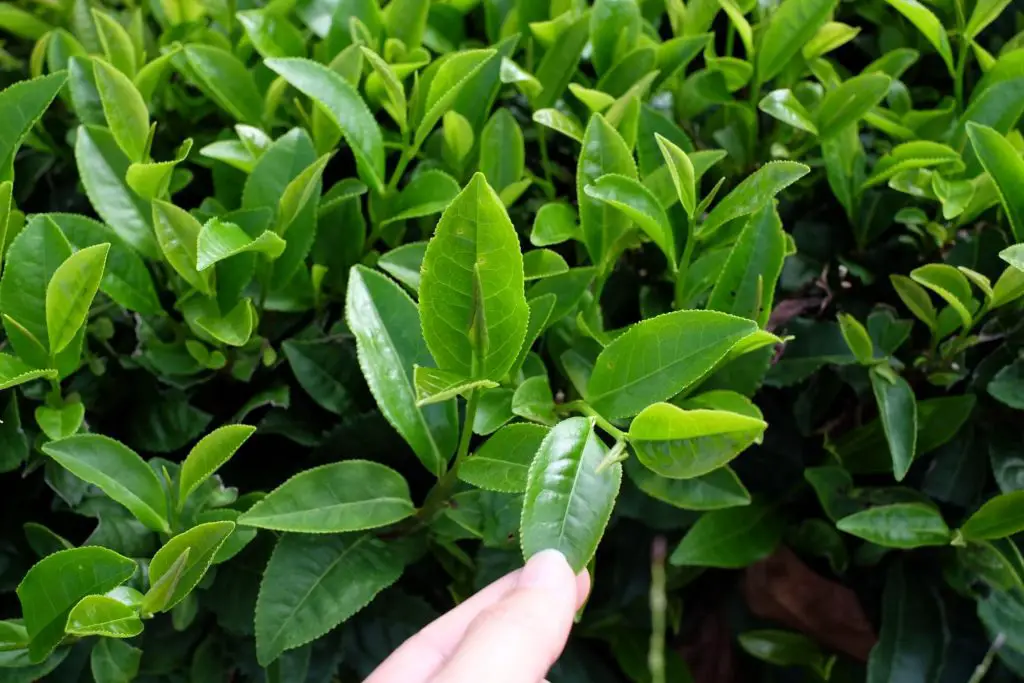
Green tea is grown in the sun, whereas matcha is shade-grown during the last three weeks of harvest
SEE MORE:
Regarding the processing methods of green tea, both traditional (sun-drying, basket-firing, or pan-firing) and modern ones (oven-drying, tumbling, or steaming) are applied. By these methods, all bitter components of green tea vanish, but its natural flavor is still preserved.
On the other hand, matcha green tea leaves go through a different processing method, in which they are washed carefully and then steamed after harvest to prevent oxidation and finally ground into a fine powder. This process also gives matcha an emerald green color.
Preparation
Normally, Japanese people prepare matcha tea in the traditional way. Firstly, they use a bamboo spoon (shashaku) to take the needed amount of matcha powder and put that amount into a heated tea bowl (chawan). After that, they add hot water (70°C) to the bowl and use a special bamboo whisk (Chasen) to whisk the tea until it becomes smooth with foam on top.
There are three main consistencies of matcha tea, namely standard, thin (Usucha) and thick (Koicha).
- Standard: 1 teaspoon of matcha powder mixed with 59ml of hot water.
- Thin: Half a teaspoon of matcha mixed with 89–118 ml of hot water.
- Thick: 2 teaspoons of matcha mixed with 30ml of hot water. This thick version is sometimes used in Japanese tea ceremonies. The matcha tea has no froth on top and requires a higher grade of matcha.
Contrary to the quite complicated preparation of matcha, preparing green tea is more simple. Firstly, you prepare hot water. Next, you pour the hot water over the tea bag or tea leaves and steep for about one to three minutes. After the steeping time, green tea is ready for you to enjoy.
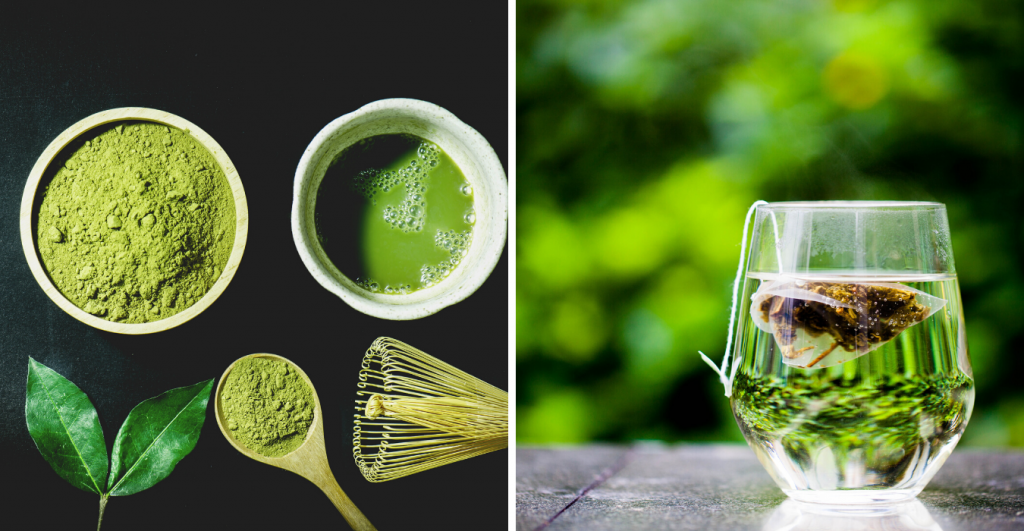
Preparing green tea is more simple than matcha preparation
Flavor Of Matcha vs Green Tea
Regarding the flavor of matcha vs green tea, they both taste grassy, earthy or vegetal. Perhaps, this is the only similarity between them in terms of flavor. In fact, they have their own distinctive flavors.
Green tea features a light, delicate and fresh flavor. Besides, it may taste floral, fruity, or nutty when there are herbs or botanicals added. The aroma of a little honey or slices of ginger, peach, jasmine, citrus and ginger put into green tea can make it taste better.
In contrast, matcha tea has a richer and more intense flavor. When you make matcha lattes (matcha tea blended with milk or sweetener), you will find it features a frothy, velvety texture and sweet taste.
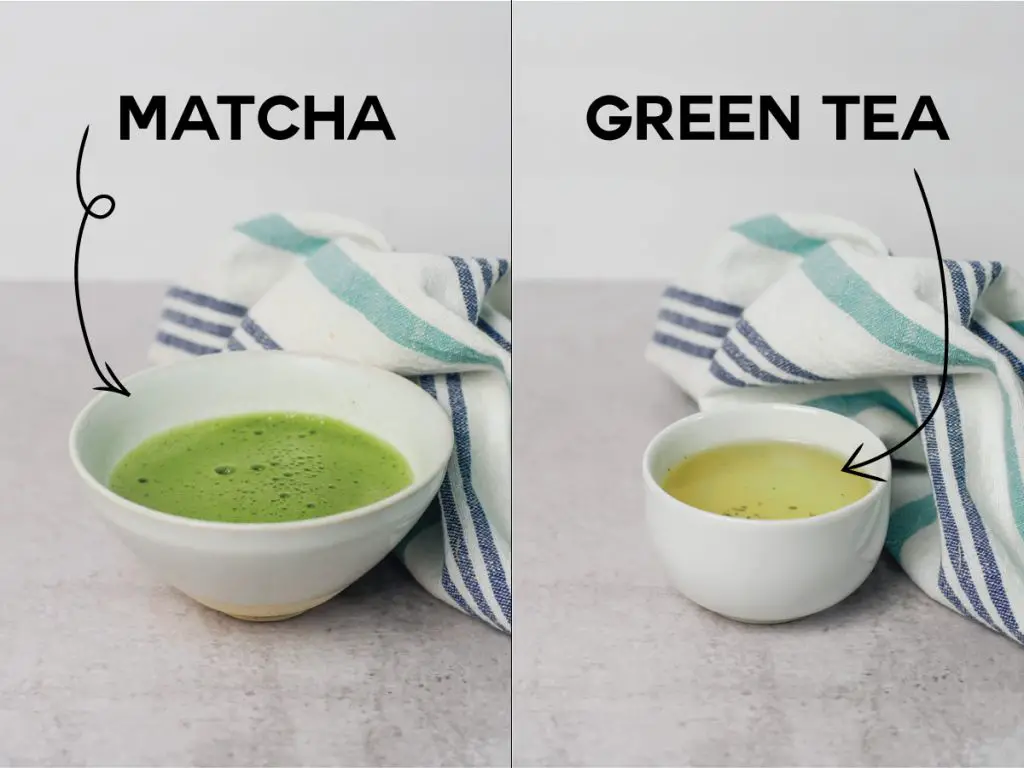
Matcha features a richer and more intense flavor than green tea
Health Benefits
Matcha and green tea share some similarities in terms of health benefits.
Firstly, they both contain antioxidants, which counteract free radicals in your body to protect cells and tissues from damage.
Nevertheless, one study showed that the quantity of antioxidants in matcha is up to 137 times more than that in a low-grade green tea. Other high-quality types of green tea still have 3 times fewer antioxidants than matcha. Thanks to the shade-grown cultivationa and processing methods of matcha, it contains the most powerful antioxidant called catechin or EGCG (epigallocatechin gallate). This substance aids in fighting inflammation in your body, maintaining healthy arteries and promoting cell repair.
Secondly, drinking green tea or matcha tea can lower the level of total cholesterol, LDL (bad) cholesterol, triglycerides, and blood sugar, which cause heart diseases. According to many studies, people who drink green tea or matcha tea have up to a 31% lower risk of heart diseases than those who don’t.
Thirdly, matcha and green tea contain a unique amino acid called L-theanine, which may increase alpha waves in your brain. These waves are connected with mental relaxation and may help to prevent signals of stress. What’s more, L-theanine may also assist you in maintaining alertness and increase the number of feel-good chemicals in your brain, contributing to improved mood, memory, and concentration.
Last but not least, green tea and matcha can be beneficial for your skin. They can help to reduce the visible signs of ageing.
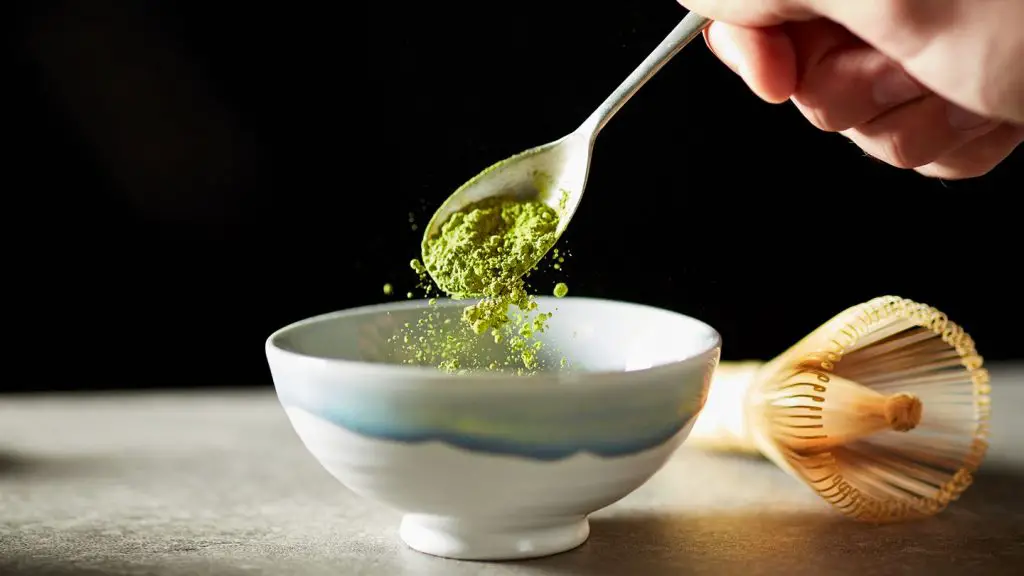
Both matcha and green tea bring you great health benefits
Matcha vs Green Tea: Safety & Side Effects
Generally, both matcha and green tea are safe for most consumers, but there can still be potential side effects related to their caffein content. Because the caffein content in green tea is lower than that in matcha, green tea is a more suitable choice for people who want to lower their caffein intake. Headaches, insomnia, nervousness, irritability, frequent urination, a fast heartbeat, and muscle tremors are major symptoms of caffein overuse.
Those who are pregnant and nursing women and people who have heart diseases should limit their caffein intake to 200 mg per day. For kids and teens, they had better not consume caffein.
You can also get a brief comparison between matcha and green tea by watching this video:
Frequently Asked Questions
1. Is Matcha Better Than Green Tea?
As mentioned above, matcha contains up to 137 times and 3 times more antioxidants than low-grade and high-grade green tea. Therefore, matcha is better than green tea in this regard. However, the level of caffein in matcha is higher than that in green tea. Thus, it is better for those who are aiming at reduce their caffein intake to drink green tea.
2. Is It Safe To Drink Matcha Everyday?
In general, drinking matcha tea daily is safe and has a positive impact on your energy levels and overall health. One cup of matcha tea a day is enough. Don’t consume too much matcha in a day!
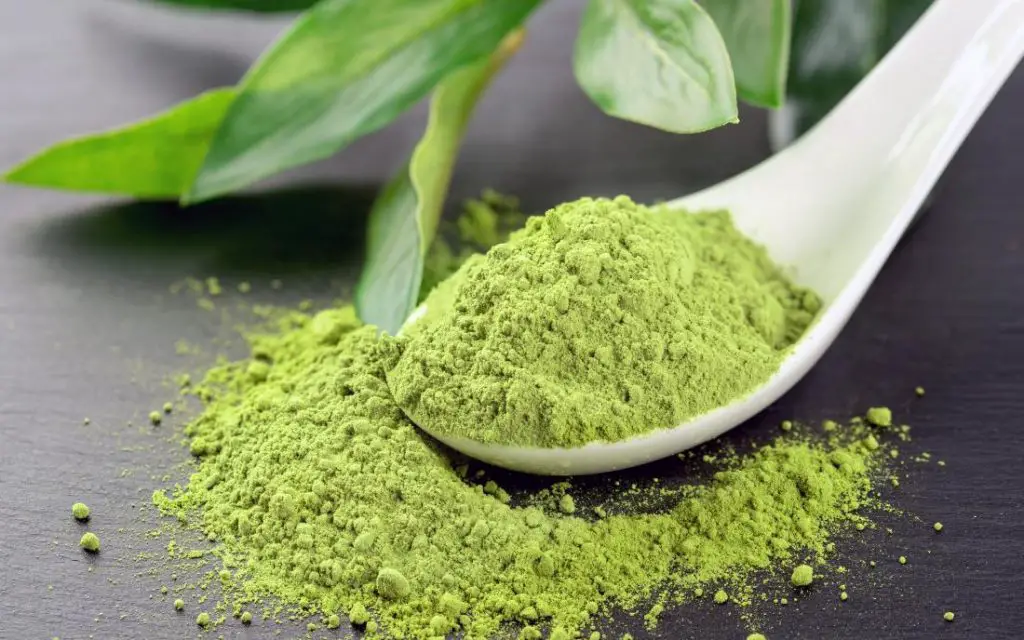
Don’t consume too much matcha in a day!
3. What Happens If You Drink Green Tea Every Day?
Sipping one cup of green tea everyday is also good. If you drink excessively, for example 3 cups a day, you may experience stomach problems, diarrhoea, iron deficiency and insomnia. Hence, drink green tea in limit or it may be detrimental to your health.
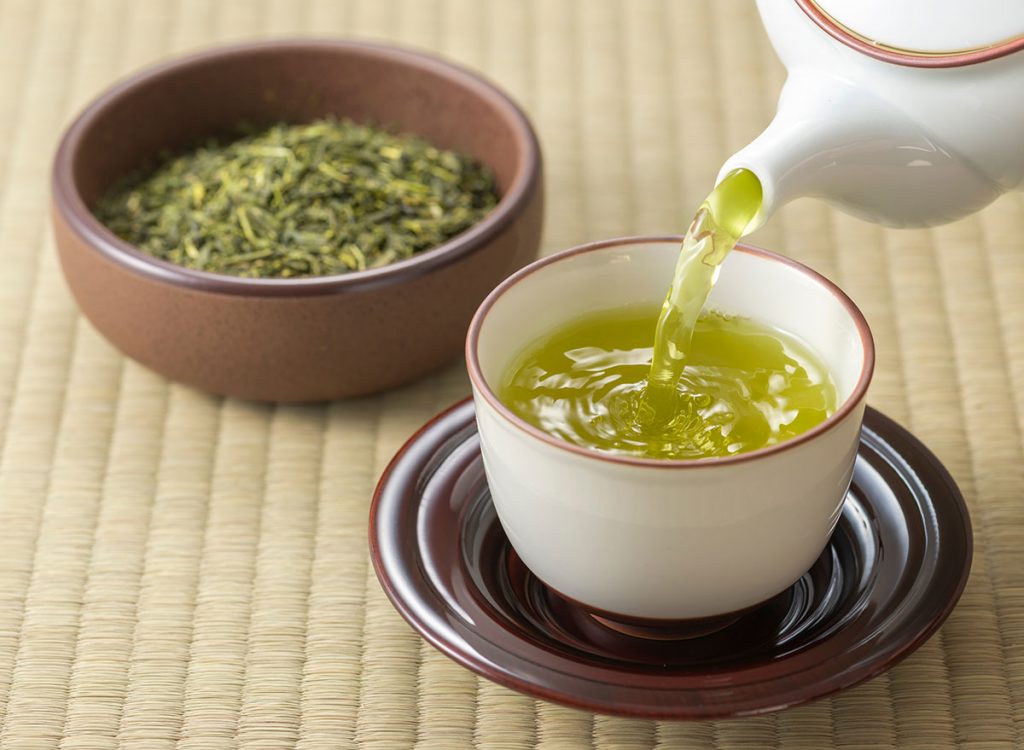
Drink green tea in limit or it may be detrimental to your health
Conclusion
Matcha vs green tea. Have you found out the similarities and differences between them after reading this blog? Matcha and green tea are similar in several aspects, but different cultivation, processing and preparation give them unique flavor and health benefits. If you haven’t tried any of the two drinks, you should give both of them a try to know your preference.

